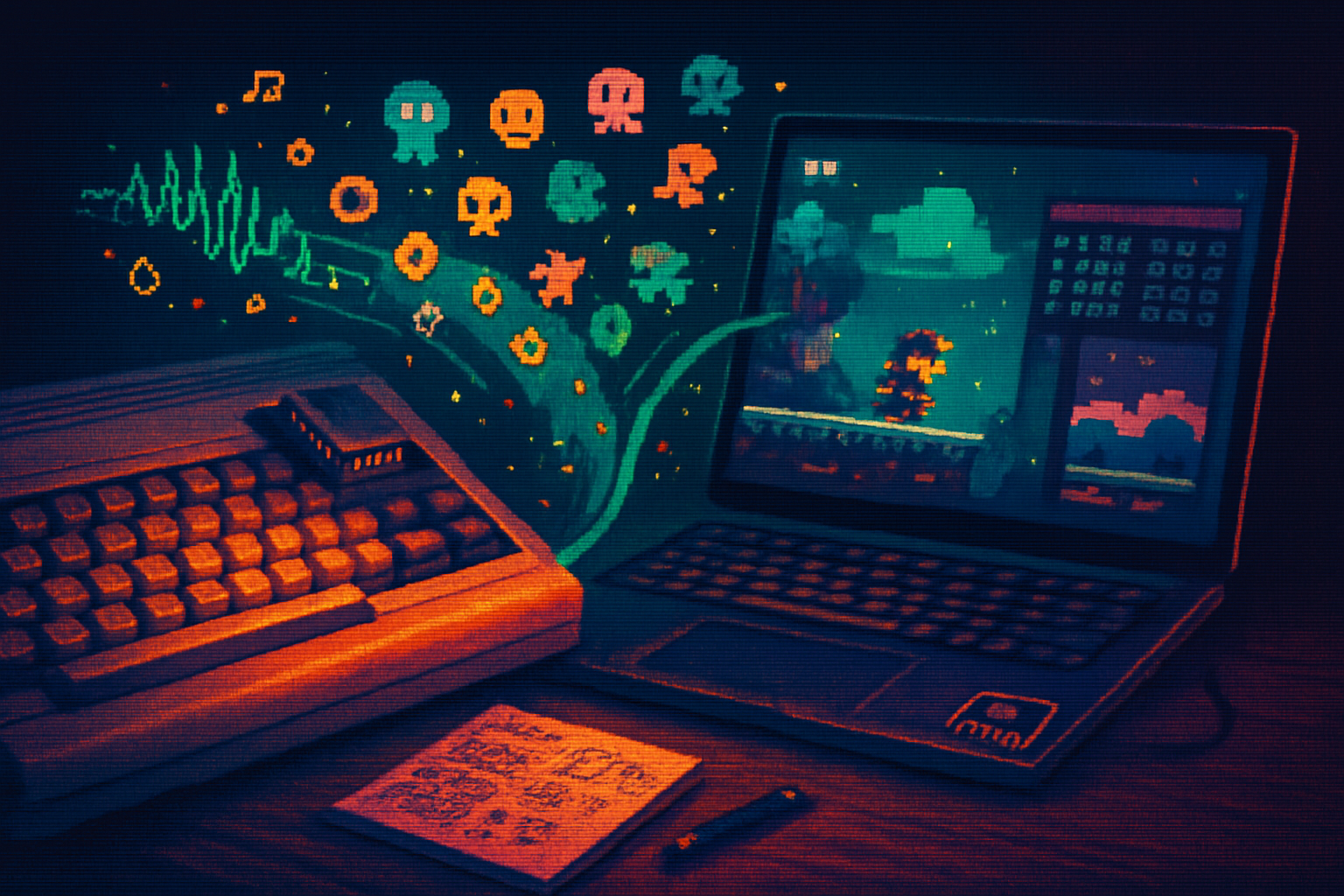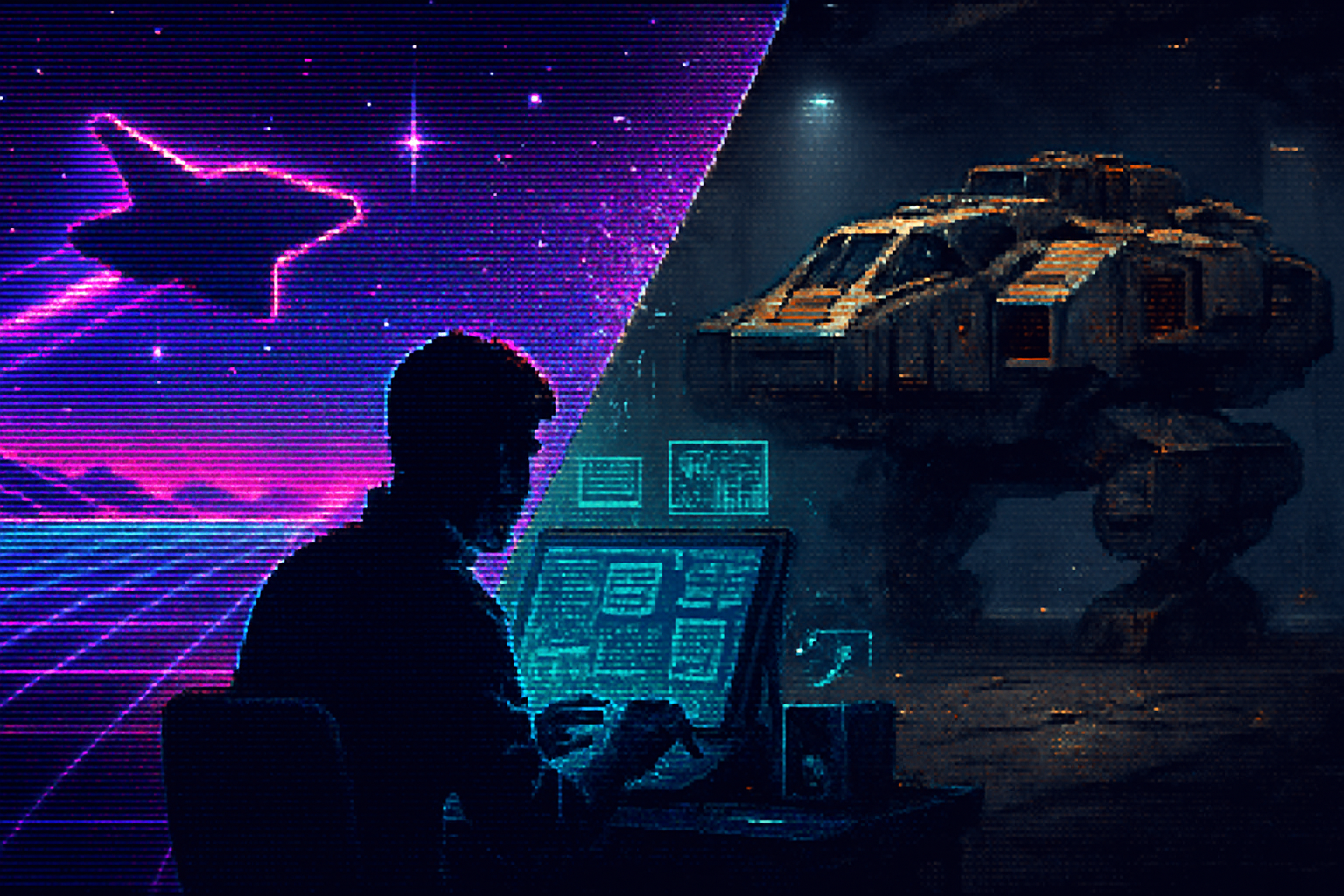· 7 min read
The Retro Revival: How Indie Developers are Reinventing Classic PC Games
From pixel art and chiptunes to demakes and spiritual successors, indie developers are mining classic PC game design for inspiration - then remaking it with modern tools, accessibility, and new mechanics. This article explores why retro aesthetics keep returning, how creators balance nostalgia with innovation, and highlights standout indie projects and developer insights.
Why the retro revival matters
Nostalgia is more than a feeling - for many players, it’s a design language. Over the last decade indie developers have leaned into the aesthetics, systems, and constraints of classic PC and console games to create new experiences that feel familiar but are unmistakably modern.
This revival isn’t a simple copy-paste of old games. It’s a deliberate reuse of visual styles (pixel art, limited palettes), audio textures (chiptune, synthesized effects), and mechanical philosophies (tight controls, emergent difficulty), wrapped with contemporary expectations: accessibility options, save systems, online distribution, and frequent updates.
In short: indies are taking the best of the past and remixing it for players who want both retro charm and modern polish.
What draws developers to retro design?
- Creative constraints sharpen design. Working within a limited color palette or tile grid forces developers to distill gameplay and visuals to essentials. Many creators describe those limits as liberating rather than limiting.
- A clear visual identity. Pixel art communicates quickly and is approachable for solo teams and small studios.
- Cultural cachet. Retro aesthetics carry emotional weight - they signal a lineage, setting player expectations before a single mechanic is explained.
- Lower barriers to entry. Learning pixel art and tracker-style music is more attainable for newcomers than high-end 3D modeling and orchestration.
These factors help explain why so many small teams opt for a retro-inspired look and feel.
Case studies: retro inspiration, modern design
Below are several indie games that show different ways developers borrow from classic PC and console traditions - and the innovations they add.
Stardew Valley (ConcernedApe)
Stardew Valley adapts the slow-burn social-sim/farming loop popularized by older series, then expands it with deeper crafting, combat, and quality-of-life features modern players expect. Created largely by one developer, it’s a prime example of taking a familiar template and iterating with care.
- Official site: https://www.stardewvalley.net/
- Overview: https://en.wikipedia.org/wiki/Stardew_Valley
Why it works: it retains the tactile, repetitive satisfaction of classic sims while improving pacing, adding robust options for solo and co-op play, and shipping frequent updates.
Shovel Knight (Yacht Club Games)
Shovel Knight is a love letter to 8-bit platformers: tight controls, screen-by-screen level design, and boss patterns reminiscent of NES-era classics - but with modern UI, checkpoint balance, and expanded storytelling.
- Official site: https://yachtclubgames.com/games/shovel-knight/
Why it works: Yacht Club captures the rhythm and feel of retro platformers without replicating their frustrations. The result is both a nostalgic trip and a finely tuned modern platformer.
Undertale (Toby Fox)
Undertale borrows the look of retro RPGs - simple sprites, top-down exploration - but subverts expectations with player-driven morality, meta-narrative devices, and unusual combat mechanics.
- Official site: https://undertale.com/
- Overview: https://en.wikipedia.org/wiki/Undertale
Why it works: it shows that retro aesthetics can cloak innovative systems, making surprises more impactful because players bring genre expectations into the experience.
Return of the Obra Dinn (Lucas Pope)
This game revives a 1-bit, monochrome aesthetic that evokes early Macintosh and printer graphics, then pairs it with intricate deduction gameplay and non-linear storytelling.
- Official site: https://obradinn.com/
- Overview: https://en.wikipedia.org/wiki/Return_of_the_Obra_Dinn
Why it works: it proves nostalgia can be more than surface - a visual constraint becomes the vehicle for a wholly original design.
Axiom Verge, Hyper Light Drifter, DUSK
- Axiom Verge (https://www.axiomverge.com/) channels Metroid-style exploration but layers on complex item interactions and modern mapping conveniences.
- Hyper Light Drifter (https://heart-machine.com/hld) evokes 16-bit action-RPGs and pairs that with modern animation, dense soundtrack, and emotional storytelling.
- DUSK (https://en.wikipedia.org/wiki/Dusk_(video_game)) taps into early ’90s FPS speed and rawness while adding contemporary stability and options.
Each title demonstrates a different blend of homage and reinvention.
Voices from the scene (what creators say)
Rather than invent new quotes, it’s worth looking at creators’ own reflections. Many have publicly described their motivations and processes:
Eric Barone (ConcernedApe), creator of Stardew Valley, has discussed building a modern farming sim inspired by earlier games while adding deeper systems and quality-of-life improvements (see the Stardew Valley site and overviews).
Yacht Club Games has spoken about designing Shovel Knight as both an homage to and improvement upon classic platformers, focusing heavily on feel and player feedback.
Lucas Pope has explained how working within an extreme pallet (1-bit visuals) helped inform the experience and the player’s approach to deduction in Return of the Obra Dinn.
Reading developer blogs, GDC talks, and interviews reveals a recurring theme: developers use retro forms to anchor player expectations, then break or expand those expectations with modern design choices.
(For specific interviews and postmortems, developer blogs and outlets such as Gamasutra/Game Developer, Polygon, and PC Gamer are excellent primary sources.)
How modern tech makes retro games better
Indies don’t need to replicate hardware limitations. Instead, they can simulate retro aesthetics while leveraging modern tools to improve comfort and accessibility.
- Engines - Unity and Godot make prototyping and cross-platform releases easier for small teams. (
- Audio tools - trackers and chiptune tools are accessible, but developers often mix synthesized textures with modern sound design for depth.
- Accessibility - toggles for text size, color-blind modes, and input remapping help retro-styled games reach broader audiences.
- Distribution - digital storefronts and social media let niche, retro-inspired games find communities quickly.
These capabilities mean developers can embrace retro form without inheriting its limitations.
The remix economy: demakes, spiritual successors, and legal questions
The scene includes: demakes (modern games remade in older styles), spiritual successors (new games that evoke a franchise without using its IP), and direct remakes.
- Demakes can be playful fan projects or commercial releases. They celebrate constraints while exploring alternate design possibilities.
- Spiritual successors - e.g., games inspired by classic franchises but built from scratch - let designers capture the spirit of a title without infringing on trademarks.
Legal caution: direct use of copyrighted assets or brands can lead to takedowns. Indie creators must be careful when referencing or remaking classic titles. When in doubt, create original art and mechanics that evoke rather than copy.
Community and culture: how players participate
Retro revival isn’t just developer-driven. Fans and modders extend the lifecycle of classics through:
- Mods and total conversions that refresh old titles.
- Demake contests and jams where creators produce retro-themed entries in short timeframes.
- Streaming and Let’s Plays that spotlight indie retro games to new audiences.
This ecosystem reinforces the cycle: fans inspire developers, developers remix the past, and communities form around shared aesthetics.
Practical advice for creators who want to try a retro-inspired game
- Pick which constraints matter. Is it a palette limit, resolution, sound channel count, or mechanical simplicity? Use constraints to guide design, not to block features players expect.
- Focus on clarity. Old games often succeeded because their interfaces were extremely clear; emulate that clarity while providing modern affordances (tooltips, autosaves, remappable controls).
- Iterate on feel. Controls and feedback - the things players feel in their hands - are more important than pixel-perfect graphics.
- Balance nostalgia and novelty. Give players recognizable hooks, but add surprises or mechanical twists so the game doesn’t feel like a museum piece.
- Read and watch postmortems. Many indie teams publish detailed devlogs and GDC talks explaining their choices - invaluable learning resources.
Where to explore retro-inspired indies
Steam and itch.io host large catalogs of retro-styled indie games. Itch in particular is a hotbed for experimental demakes and jams.
Developer websites and Twitter/X accounts often share devlogs, assets, and progress updates. Follow creators you admire for insights and early builds.
Final thoughts
The retro revival in indie games is not about recreating the past verbatim. It’s a conversation with history: developers borrow the aesthetics and mechanical wisdom of classic games, then interrogate and rebuild them with modern expectations in mind. The result is a vibrant ecosystem where nostalgia is a starting point - not a destination. Whether you’re a player chasing the feel of an old favorite or a creator experimenting with a reduced palette and big ideas, the retro revival offers a rich space to play, learn, and invent.
Further reading and resources
- Stardew Valley official: https://www.stardewvalley.net/
- Shovel Knight (Yacht Club Games): https://yachtclubgames.com/games/shovel-knight/
- Undertale official: https://undertale.com/
- Return of the Obra Dinn: https://obradinn.com/
- Unity: https://unity.com/
- Godot: https://godotengine.org/
- Pixel art overview: https://en.wikipedia.org/wiki/Pixel_art
- Chiptune overview: https://en.wikipedia.org/wiki/Chiptune



